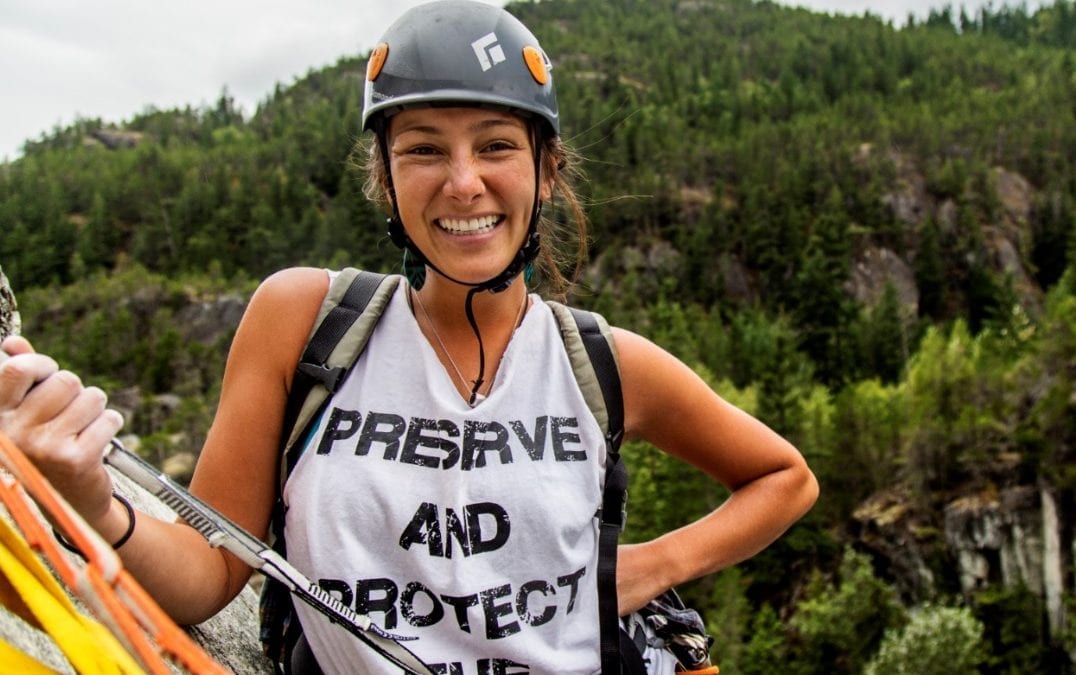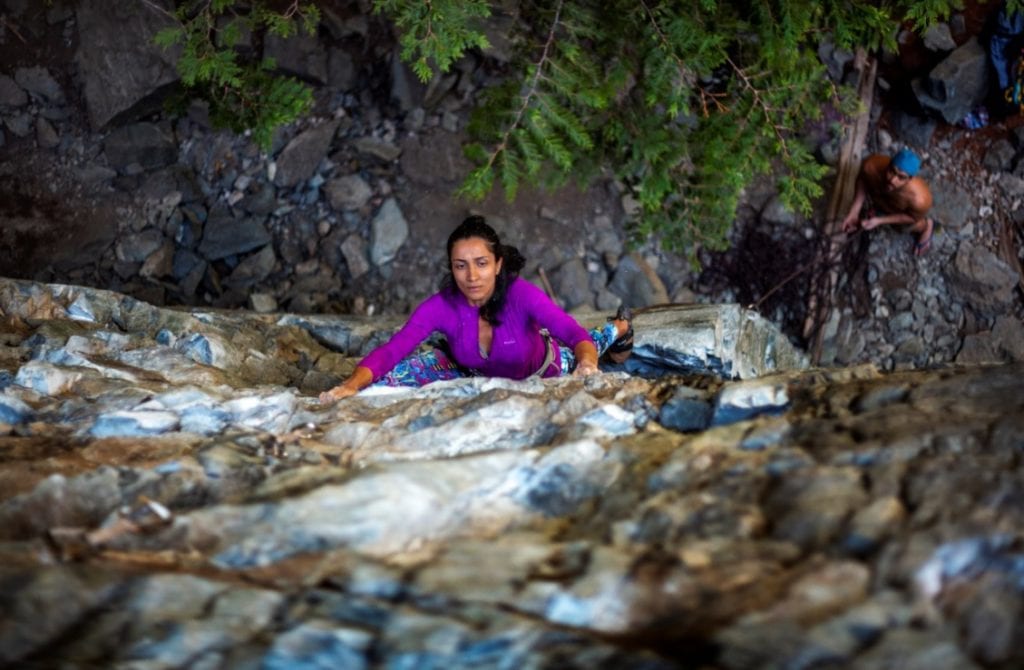Erynne Gilpin, Victoria-Based Indigenous Rock Climbing Activist
"As I climbed more, I saw different worldviews, actions and relationships to the land. I wondered, what can I contribute to informing non-Indigenous people about the relationship of land, governance and well-being."

Like all boulder problem developers, Erynne Gilpin, a Michif (Saulteaux-Cree Métis) academic and climber, is searching for great new lines. But when she opened up new blocs on Vancouver Island, the names of the problems – 7 generations bloc, Oolichan Grease, Moccasin Telephone, Turtle Back – revealed that her objectives included an approach to climbing in harmony with Indigenous ideas and experiences.

“We’re trying to locate our climbing within Indigenous cosmologies and place-based knowledge about the land,” she says, “being intentional, and also addressing the existence of misogynist and racist names that make me not want to climb.” The idea is to take Indigenous youth groups to experience climbing in a safe space. It’s part of Gilpin’s mission to introduce Indigenous people to climbing on terms respectful of their culture and protocol and reflects a life of passionate engagement with Indigenous culture, spirituality and politics.
Gilpin’s family moved to Komoka, a small town outside of London, Ont, when she was nine years old. Raised outside of the indigenous community, she was surprised when she was the target of a racist epithet on her first day on the school bus. “At the time, like many, I hardly knew about my culture,” says Gilpin. “That awareness came with age, when I was about 17 or 18. Then I learned more about our family’s identity and larger story.”
Throughout her life, Gilpin has experienced the outdoors as a place to recreate and play. As kids, she and her sister played in a little slice of untended green space between their house and truck factory. Her mother had a little farm in the woods, and visits to their home community in Manitoba gave even greater scope for their explorations. “My whole childhood was based on being outside with my sister,” she says. She first started climbing on a student youth exchange in Brazil, where she met many Indigenous people “When I returned,” she says, “I started to study social justice at Western University [in Ontario], where I was able to continue my learning in terms of thinking through these things.”
In Brazil, she met her future husband, Brazilian climber and photographer Kl. Peruzzo, an Afro-Indigenous man. He climbed “not as a sport but as a way to be on home territories,” she says, “he could spend weeks and weeks climbing.” He also showed her a video of his sister, Karuline, climbing. “This beautiful brown woman was talking about climbing,” says Gilpin, “and about fear and self-worth and the more emotional aspects to this activity. I was so inspired to see her step into and transcend fears.”

When Gilpin moved to Victoria in 2013, she went to the gym, Crag X, to see if there was something there for her. “I didn’t enjoy socializing there,” she said. “I put on headphones to avoid it and pretended to laugh at jokes that I couldn’t relate to, and in many ways made myself smaller just to exist in that space.” The more she climbed and thought about climbing, the more she came to see this absence of Indigenous people was a product of systemic racism.
“It’s not because Indigenous people have not been climbers,” says Gilpin. In fact, there are many traditions of climbing and visiting high places among Indigenous peoples. Mountains were a place for ceremonial practice, not just to pursue an activity where difficulty was quantified. “Their exclusion of Indigenous people now is the result of strategic efforts to remove bodies from land and naming.
As I climbed more, I saw different worldviews, actions and relationships to the land. I wondered, what can I contribute to informing non-Indigenous people about the relationship of land, governance and well-being. I became interested in ways climbing can be a doorway to learn about structural barriers, racism, sexism, historical barriers and language and rejecting concepts like conquering, virgin rock, adventure, recreation and thrills and their relationship to colonial values of extraction.”

Through her contacts with groups like Flash Foxy, Brown Girls Climb and Native WomensWilderness, Gilpin attended workshops to create spaces for people who might otherwise have been excluded from climbing. “It had been five years since I first called myself a climber and I was crying as we climbed together.” More networking and community building with these groups is in Gilpin’s future plans.
Plans for the future also include sport climbing, 5.12a, V7 boulder problems and visiting Squamish again. But for Gilpin, a visit to a new area carries other layers of meaning and responsibility.
“A lot of friends asked if I had visited Squamish,” says Gilpin. “I went on a winter day, and didn’t climb much, but the next summer we wanted to do it in a way that was reflective of Indigenous community governance. We called at the band office, I introduced myself, asked it there was anyone to ask for permission, to climb and at the Elder’s lunch the next day presented protocol, offered tobacco and more formally introduced ourselves, what we were doing there, shared some culture, and were given permission. Consent and permission are ongoing. On the land, I enact my governance. My body on the land is accountable, not just to my self but to the next generation. The land is a self-care place that impacts the body and well-being.”
Beyond climbing, Gilpin has a Production company that will pursue indigenous stories in the outdoors, “The long-term goal is transformation,” she says, “Climbing can be safer place for all bodies and all cosmologies.”


